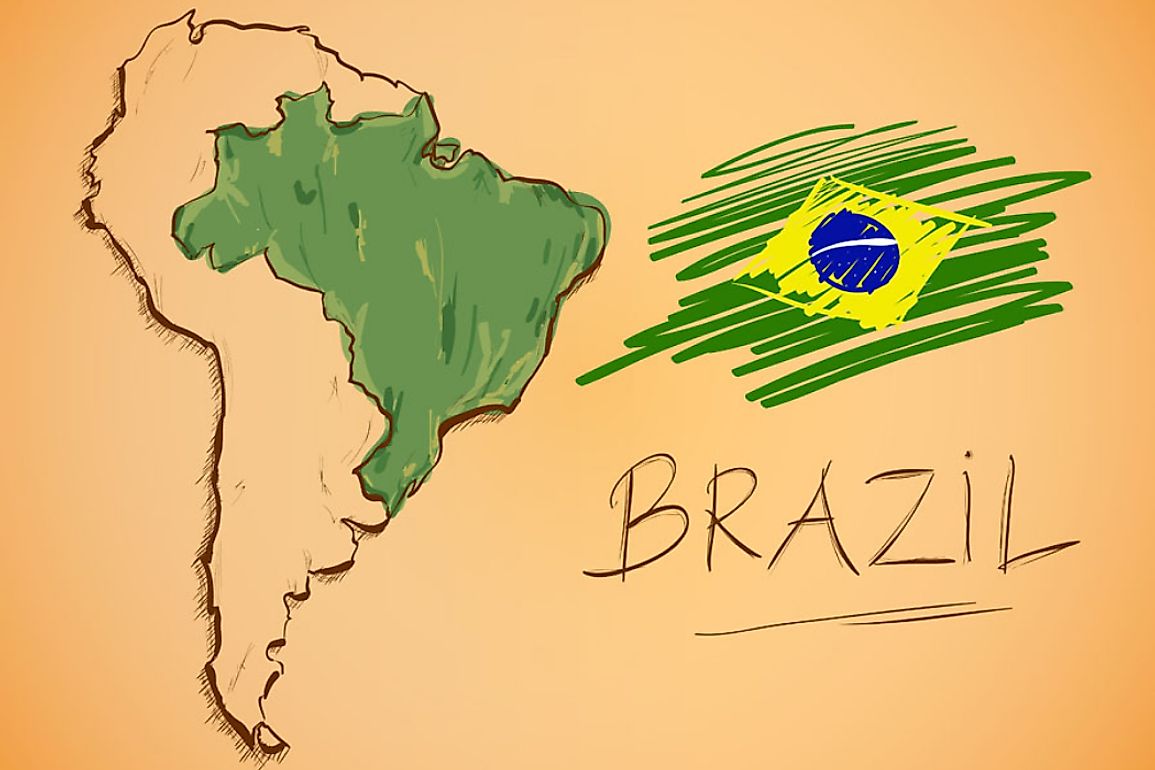What Continent Is Brazil In?

The Federative Republic of Brazil, whose capital is Brasilia, is the world’s fifth largest country and is in South America. Brazil’s population is the sixth highest in the world and is also the largest Portuguese speaking country. The country is the leading coffee producer worldwide with one of the fastest growing economies and identified as an emerging global power. Politically, Brazil has witnessed the bad and good of political dictatorship and democracy.
Geography
Brazil is the only country worldwide with the Equator and the Tropic of Capricorn across it, further, it is the only one with contiguous territory both inside and outside the tropics. The country’s typography varies due to its vast size, relief, and natural resources. Brazil is one of the most biodiverse countries and home to the largest part of the Amazon forest, the largest rainforest globally. This country, the third largest in the Americas, borders every country in mainland South America apart from Ecuador and Chile in addition to occupying much of the continent. In total, Brazil has an area of 3,287,956 square miles.
Climate
Most of Brazil experiences tropical climate though there are six climatic subtypes namely oceanic, subtropical, semiarid, tropical, desert, and equatorial. This diversity results in different environments like semiarid and arid areas in the northeast, equatorial rainforests in the north, tropical savannahs in the central part, and to temperate coniferous forests in the south. Within these climatic regions also exists micro-climates. Northern Brazil has no real dry season due to the equatorial climate. Central Brazil has seasonal rainfall just like most Savannah climates. In the semi-arid region, the annual rainfall amounts to about 31.5 inches and mostly occurs for less than five months. Southern Brazil has cool winters with frost and snowfalls in the highest areas.
Demographics
2013 estimates indicate that Brazil has a population of approximately 204 million people and a population density of 57.8 people per square mile. As of 2008, the official census revealed that there were 190 million people. A higher percentage of the people live in urban areas with the population concentrated mostly in Northeastern and Southeastern regions. The Center-West and North regions population is sparse despite the expansive territory. The population divides into the White Brazilians, Pardo (Brown Brazilians), Black Brazilians, Asian Brazilians and the Amerindians who are the Indigenous Brazilian people. Christianity and the Catholic faith, are the dominant religion and denomination respectively, however, Protestant faith has been on the increase in the last few decades. Other religions include Buddhism, Judaism, Islam, Afro-Brazilian religions, and Amerindian religions.
Major Tourist Attractions
Brazil has many natural and man-made tourist attraction sites. The Amazon ecosystem is one of the most visited and studied areas in the world although its mysteries remain many. In 2015, Brazil received over 6.36 million visitors and collected more than $8 billion. The country offers a variety of ecotourism, leisure, and cultural tourism. The country also has many World Heritage Sites. Apart from the Amazon, some of the attractions that are popular with tourists include magnificent waterfalls, beaches, Christ the Redeemer statue, the 275 Iguacu falls, the Amazon River, and the many national parks among other attractions.











